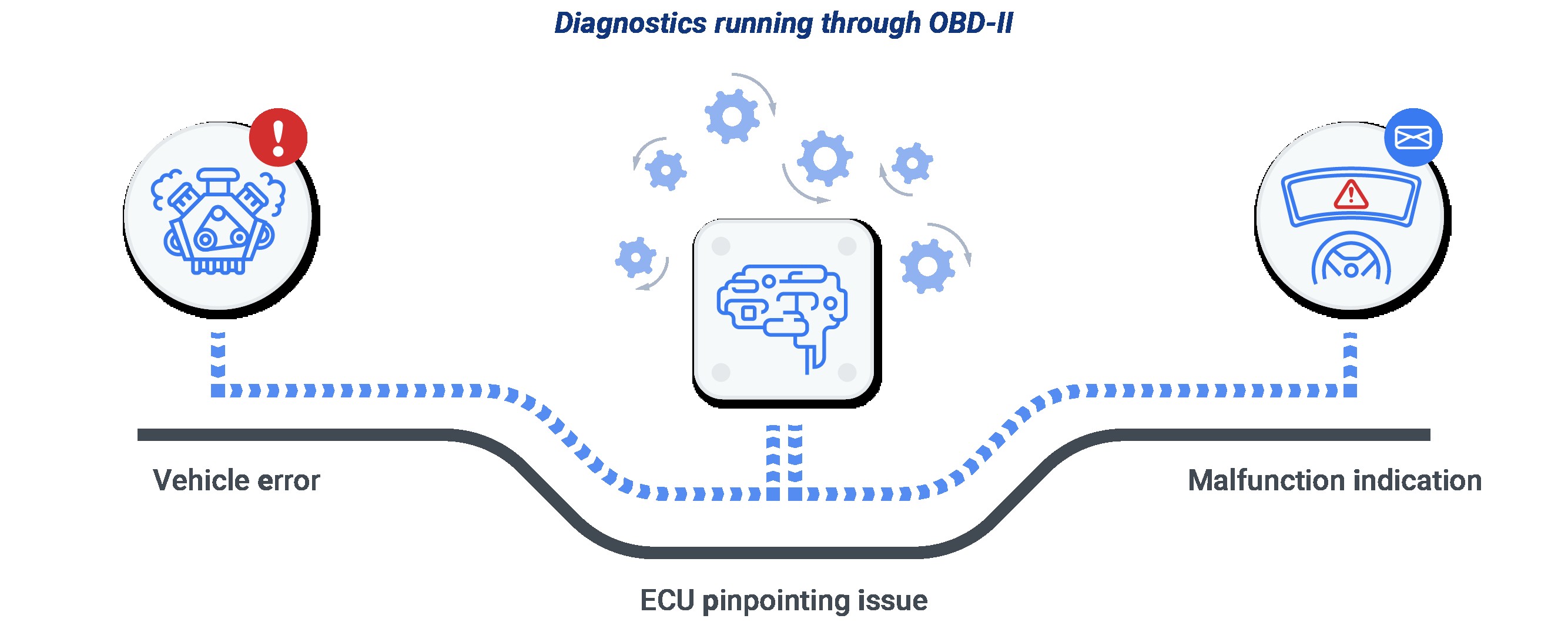OBD2 scanners are essential tools for car maintenance and repair. But how do these devices actually work? This guide delves into the inner workings of OBD2 scanners, exploring how they communicate with your car’s computer to diagnose issues and provide valuable insights into vehicle health. Understanding this technology empowers you to make informed decisions about your car’s maintenance and repairs.
Decoding the Mystery: How OBD2 Scanners Communicate with Your Car
OBD2, or On-Board Diagnostics II, is a standardized system that allows external devices, like scanners, to access diagnostic information from a vehicle’s computer. This system revolutionized car repair by providing a common language for all makes and models.
OBD2 scanners work by connecting to the OBD2 port, usually located under the dashboard on the driver’s side. This port provides a physical and electrical interface for communication. The scanner then uses a specific protocol, a set of rules for communication, to request information from the car’s Engine Control Unit (ECU).
The ECU, often referred to as the car’s brain, constantly monitors various sensors throughout the vehicle. These sensors track everything from engine performance and emissions to fuel efficiency and transmission operation. When a sensor detects a problem, the ECU generates a Diagnostic Trouble Code (DTC), a unique code that identifies the specific issue.
The OBD2 scanner retrieves these DTCs and displays them on its screen. Many scanners also provide definitions of the codes, helping you understand the nature of the problem. Some advanced scanners can even access live data streams from the sensors, allowing you to monitor real-time performance and identify intermittent issues.
Understanding OBD2 Protocols: The Languages of Car Communication
Just like people speak different languages, cars communicate using different protocols within the OBD2 system. There are five main protocols:
- SAE J1850 PWM (Pulse Width Modulation): Primarily used by Ford vehicles.
- SAE J1850 VPW (Variable Pulse Width): Commonly used by General Motors vehicles.
- ISO 9141-2: Used in some Chrysler, European, and Asian vehicles.
- ISO 14230 KWP2000 (Keyword Protocol 2000): Also used in some Chrysler, European, and Asian vehicles.
- ISO 15765 CAN (Controller Area Network): The most common protocol in modern vehicles.
OBD2 scanners are designed to automatically detect and communicate using the appropriate protocol for your vehicle. This ensures seamless data retrieval regardless of the car’s make or model.
Beyond Basic Codes: Accessing Live Data and Advanced Functionality
While retrieving DTCs is a core function, modern OBD2 scanners offer much more. Many scanners can access live data streams, providing real-time insights into sensor readings like engine RPM, coolant temperature, and oxygen sensor voltage. This data allows for more in-depth diagnostics and troubleshooting.
Some advanced scanners also offer features like:
- Bi-directional control: Allows the scanner to send commands to the car’s systems, such as activating actuators for testing purposes.
- Emissions testing readiness: Checks if the vehicle’s emissions monitoring systems are functioning correctly.
- Freeze frame data: Captures a snapshot of sensor data at the moment a DTC was triggered.
- **OBD-II vehicle compatibility](https://d1ihv1nrlgx8nr.cloudfront.net/media/django-summernote/2024-11-27/5767c0c1-e7bb-461c-8ad7-129bdae0d6a3.png)
OBD2 Scanners: Empowering Car Owners and Professionals Alike
OBD2 scanners have transformed car repair and maintenance. They provide a user-friendly way to diagnose car problems, saving time and money. Whether you’re a professional mechanic or a car enthusiast, understanding how OBD2 scanners work empowers you to take control of your vehicle’s health. By leveraging the power of OBD2 technology, you can ensure your car runs smoothly and reliably for years to come.

